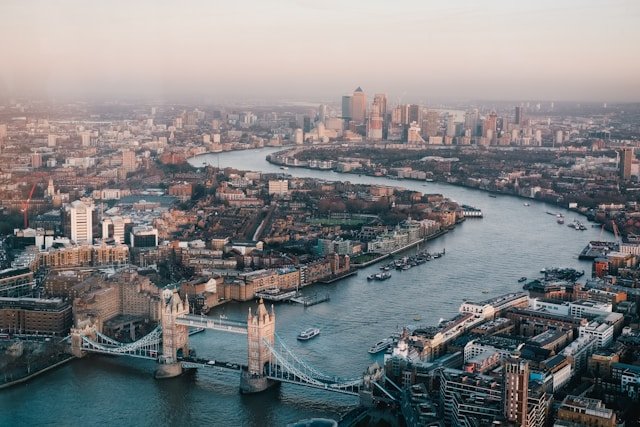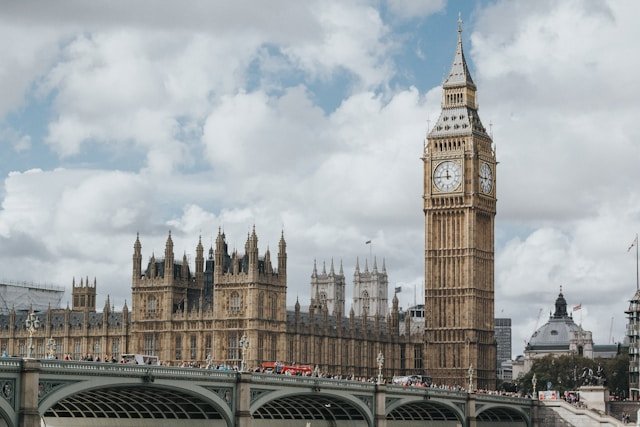A literary journey through London: in the footsteps of Sherlock Holmes and beyond

From Charles Dickens to Virginia Woolf, from Jane Austen to William Shakespeare and Oscar Wilde, if there’s one thing Britain can proudly boast, it’s a rich and prolific literary tradition.
Across centuries, British authors have given the world an extraordinary range of novels, poems and essays, shaping not just literature but also the cities and streets in which their characters lived. For literature lovers and curious travellers alike, exploring the UK from a literary perspective offers a unique, thoughtful way to experience its landscapes — and nowhere is this more rewarding than in London.
In this article, we’re setting off on a very special journey: retracing the steps of Sherlock Holmes, the most iconic detective in British fiction. With Arthur Conan Doyle’s books under our arm, we wander through the capital to discover the settings that inspired and appeared in Holmes’s thrilling adventures.
Sherlock Holmes, the most famous detective worldwide
Sherlock Holmes, born in the late 19th century, became one of the most beloved figures in England — and worldwide. He is not just a fictional genius; he is an essential part of British cultural identity. Today, it’s our turn to follow the clues, beginning with an obvious — and unmissable — stop: Baker Street.
This amazing road in the Marylebone district was the fictional home of Holmes and the starting point for countless investigations. While 221B Baker Street never existed during Doyle’s time, it has since come to life at what is now 239 Baker Street. The building proudly displays the number 221B on its façade, a permanent tribute to the great detective.
Since 1990, the address has housed the Sherlock Holmes Museum, an atmospheric, three-storey townhouse lovingly preserved as it might have been in Holmes’s day. Here, visitors can step into the imagined world of Holmes, Dr. Watson, and their housekeeper Mrs. Hudson — and admire details of daily life as described in the stories. The sitting room, complete with Holmes’s violin and correspondence, offers an immersive look at how the detective might have worked behind the scenes.
Just across from Baker Street station, a towering bronze statue pays homage to Holmes, featuring his iconic deerstalker hat, pipe, and overcoat. A modern twist? The statue includes a QR code — scan it with your mobile and receive information about Holmes’s history, narrated by the detective himself (well, almost).
More Sherlockian stops across the capital

But there’s far more to Holmes’s London than Baker Street. A short walk away lies 9 Queen Anne Street, the building that reportedly inspired the residence of Dr. Watson. And the author’s address wasn’t far either: at 2 Upper Wimpole Street, a blue plaque now honors the house where the author once lived.
Not far off, at 2 Devonshire Place near Baker Street, Doyle had his medical practice, where he wrote many of his stories when patients failed to arrive.
Wandering around London, it’s easy to see why Doyle chose this city as Holmes’s playground. From foggy alleyways to grand boulevards, the capital is practically a character in its own right in the stories. In fact, familiar London landmarks often appear in his mysteries: Piccadilly Circus, Trafalgar Square, the British Museum, and Charing Cross stationall feature prominently as backdrops for Holmes’s investigations. The British Museum, in particular, was a favourite haunt of the detective, where he would consult rare books and artefacts to uncover vital clues. You should plan your itinerary carefully, as you don’t want to miss any of these iconic spots, and consider your transport options. Exploring London by car can be a real adventure given the traffic, so public transport might be a smarter choice.
Literary London: more than just Sherlock
While Holmes might be our guide today, he’s certainly not the only literary figure whose presence lingers in London’s streets.
Head to Bloomsbury, the neighbourhood that was once home to Virginia Woolf and the famous Bloomsbury Group — a meeting of writers and artists who shaped early 20th-century British thought. Wander through Russell Square, and you might imagine Woolf deep in thought, composing lines of Mrs Dalloway or To the Lighthouse.
Travel further south, and you’ll arrive at Southwark, Shakespeare’s London. The Globe Theatre, an incredible renovation of the playhouse where Shakespeare’s work was first performed, offers a great connection to the Bard’s time. Attending a performance here — whether Hamlet, King Lear, or Twelfth Night — is a must for lovers of English theatre and literature.
Meanwhile, near Covent Garden, exactly at 29 Southampton Street, stands the house where Charles Dickens once lived. Today, the Charles Dickens Museum gives visitors a glimpse into Victorian life, complete with original manuscripts and Dickens’s personal belongings. Walking these halls, it’s easy to picture Oliver Twist, Ebenezer Scrooge or Little Nell moving through the gritty streets of 19th-century London.
And let’s not forget Jane Austen, who, although more associated with Bath or Hampshire, also left her mark on London. Her characters — especially the Bennet sisters from Pride and Prejudice — often visited the city for society events, and some key chapters are set in the capital. Austen herself lodged in various places, including 10 Henrietta Street in Covent Garden, a vibrant area still worth exploring today.
A taste of London’s literary past — and present
Literature and food have long gone hand in hand, and London offers the perfect place to sample both. Just imagine Sherlock Holmes sipping tea by the fire or tucking into a hearty breakfast before heading out to solve a case. Victorian London was full of flavours — from boiled beef and suet puddings to oysters and gin — and today’s food scene continues to be an adventure in itself.
For those keen to explore the city through its tastes as well as its texts, a British food tour London is the perfect complement to your literary pilgrimage. Many tours stop at classic pubs, historic food markets, and secret spots that echo the city’s past, allowing you to follow in the footsteps of both fictional and real-life characters while discovering the flavours they might have enjoyed.
One can easily imagine Holmes and Watson dining at a quiet Soho eatery after a long day’s sleuthing, or Dickens’s characters snacking on pie and mash in a bustling East End tavern. These food traditions are still alive — but now accompanied by craft beer, artisan cheese and global street food that would astonish the Victorians.
Final stop: following the stories wherever they lead
London is a treasure trove of literary landmarks — a place where the real and the fictional blur beautifully. Whether you’re captivated by Sherlock Holmes’s logic, swept away by Dickensian drama or enchanted by Woolf’s poetic introspection, this city offers a thousand paths to explore.
To truly embrace the spirit of London’s stories, take your time. Lose yourself in a bookshop in Notting Hill, sip coffee in a tucked-away Bloomsbury rooftop bar, or join a themed food tour London that serves up history with every bite. Literature isn’t just found on the page — in London, it lives on in the very streets, flavours and buildings that inspired it.
So, grab your favourite novel, lace up your walking shoes, and set out to discover London as the great authors once did: with wide eyes, curious minds, and an appetite for both stories and experiences.